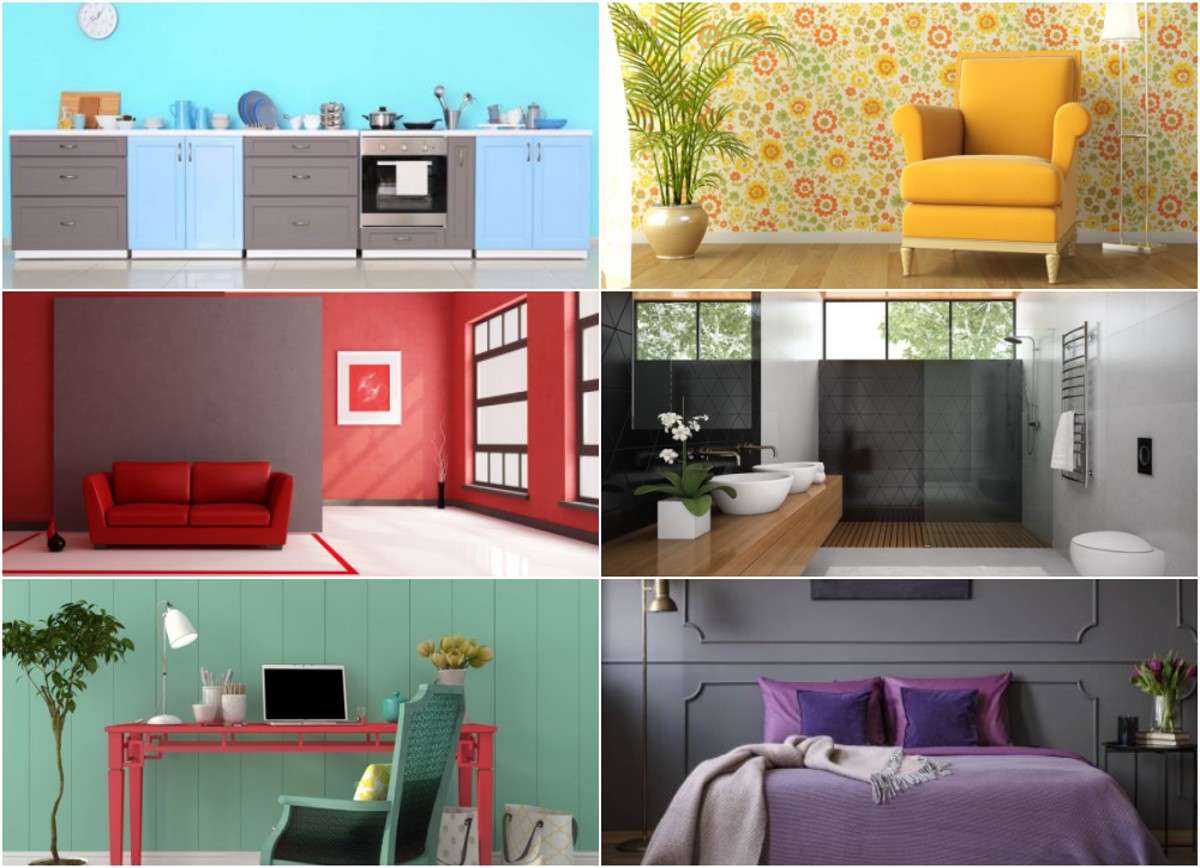The psychology of color is a fascinating and integral aspect of interior design. It can significantly influence our emotions, behaviors, and overall well-being within a space. Choosing the right color palette for your home is not just about aesthetics; it’s about creating an environment that resonates with your personality and promotes the desired ambiance. In this comprehensive blog post, we delve into the intricate world of color psychology, guiding you through the process of selecting the perfect color palette for your home. Whether you’re looking to create a serene sanctuary or an energetic and vibrant space, understanding the psychology of color will empower you to make informed design decisions.
The Basics of Color Psychology
Color psychology is the study of how different colors evoke specific emotional and psychological responses. Each color has its own unique characteristics and associations, which can influence our mood, perception, and even physiological reactions. Here’s a brief overview of the psychological impact of some common colors:

1. Blue: Often associated with calmness and serenity, blue hues can create a tranquil and soothing atmosphere. Lighter shades of blue promote relaxation, while darker blues evoke a sense of depth and stability.
2. Red: A bold and energizing color, red is known to stimulate excitement, passion, and even appetite. It can be used strategically to draw attention and create a focal point in a room.
3. Green: Symbolizing nature and growth, green hues are refreshing and harmonious. They can promote a sense of balance and tranquility, making them ideal for creating a rejuvenating space.
4. Yellow: Yellow is associated with positivity, warmth, and energy. It can add a cheerful and uplifting vibe to any room, but excessive use may lead to overstimulation.
5. Neutral Tones: Colors like beige, gray, and white are versatile neutrals that provide a clean and timeless backdrop. They allow for easy pairing with bolder accent colors and can create a sense of simplicity and sophistication.
The Intricacies of Color Psychology
Color psychology is a multifaceted field that explores the intricate interplay between colors and human emotions. Beyond the basic associations mentioned earlier, each color has a range of nuances that can impact our feelings and behaviors. For instance:

1. Shades and Intensity: Different shades and intensities of a color can evoke distinct emotional responses. Lighter shades of color might feel airier and more open, while darker shades can create a sense of coziness or even mystery.
2. Cultural Context: Cultural backgrounds can influence our perceptions of color. For example, while red might symbolize love and passion in one culture, it might be associated with luck or warning in another.
3. Personal Experiences: Personal experiences and memories tied to specific colors can shape our reactions to them. A color that reminds you of a pleasant childhood memory might evoke a positive emotional response.
4. Color Combinations: The way colors are combined can drastically alter their impact. Combining contrasting colors can create a dynamic and energetic atmosphere, while harmonious combinations can promote a sense of unity and calm.
Deeper Considerations in Color Selection

1. Biophilic Design: Biophilic design is a concept that emphasizes the connection between humans and nature. Choosing colors inspired by the natural world, such as earthy greens and browns or serene blues, can contribute to a sense of well-being and tranquility.
2. Color and Functionality: Different colors can enhance the functionality of a space. For instance, cool and muted tones might be ideal for a meditative space, while vibrant and warm colors could energize a workout area.
3. Personality and Mood: Consider your own personality traits and the mood you wish to create in each room. Are you seeking a calm oasis for relaxation or a vibrant space for creativity and socializing?
4. Psychological Balance: A balanced color palette takes into account both the desired emotional response and the overall aesthetics of the room. Too many bold colors might overwhelm you, while an all-neutral scheme could lack visual interest.
Implementation and Experimentation
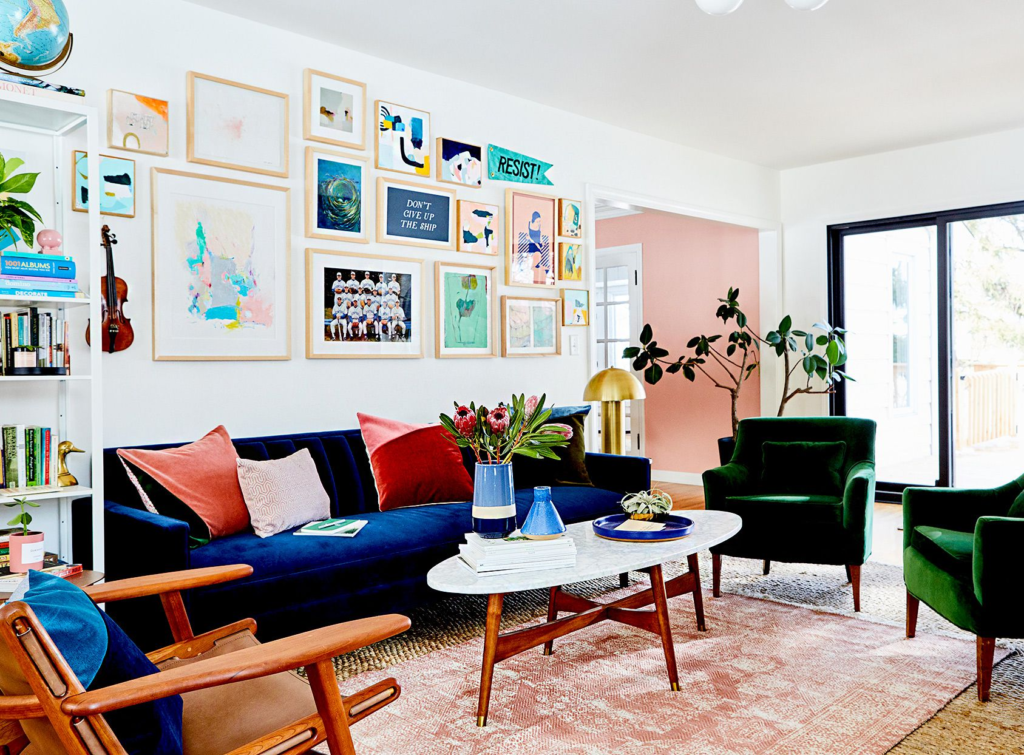
1. Color Testing: Once you’ve identified potential colors, test them in the actual room. Paint a sizable swatch on the wall and observe it at various times of the day. Natural and artificial lighting can dramatically alter how a color appears.
2. Sample Combinations: Experiment with different color combinations to find the perfect balance. You might try creating mood boards or using online tools to visualize how different colors work together.
3. Furniture and Textiles: Consider the existing furniture and textiles in the room. Your color palette should complement these elements rather than clash with them. Take into account the color of upholstery, curtains, and other furnishings.
4. Accents and Details: Don’t forget about the power of accents and details. Small decor items, throw pillows, artwork, and rugs can introduce your chosen colors in subtle and impactful ways.
Creating a Cohesive Color Flow
To ensure a cohesive flow throughout your home, consider how the color palettes of different rooms interact. While each room can have its distinct personality, there should be a sense of harmony as you move from one space to another. This can be achieved through:
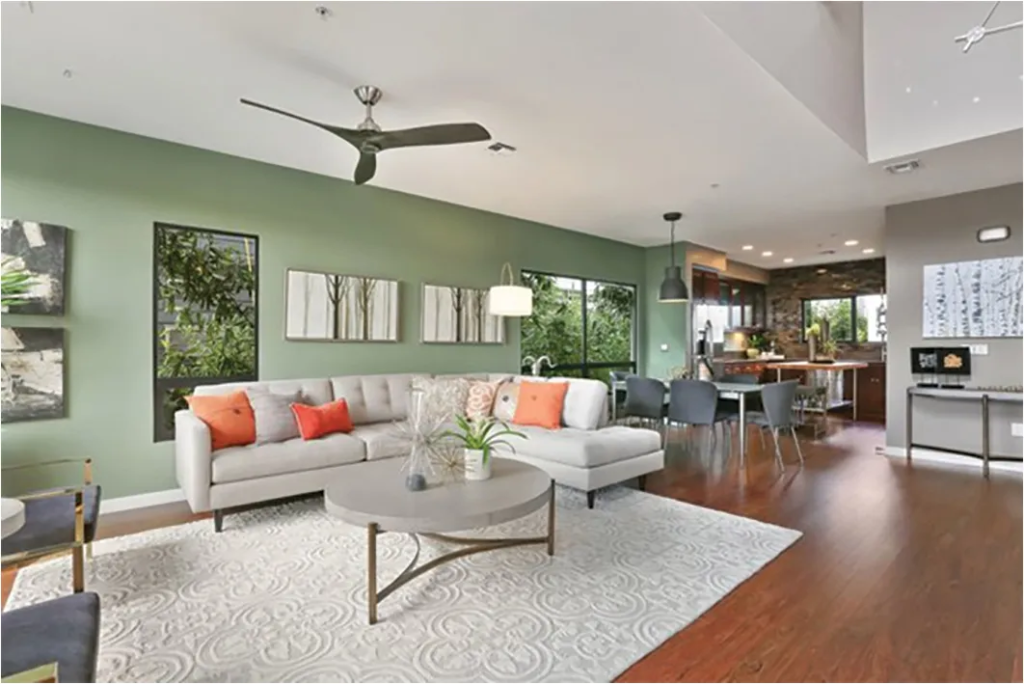
1. Color Transitions: Choose a color from one room as an accent in the adjacent space to create a smooth transition.
2. Shared Elements: Incorporate shared elements, such as a particular color in artwork or decor, to tie different rooms together.
3. Neutral Anchors: Neutrals can serve as a common thread, providing a neutral backdrop that allows accent colors to shine in each room.
Selecting a Color Palette
1. Consider the Room’s Purpose: Before choosing a color palette, consider the intended function of the room. For instance, a bedroom should promote relaxation and sleep, while a home office might benefit from energizing and focused colors.
2. Personal Preference: Your personal preferences and the emotions you want to evoke are crucial factors in color selection. Think about colors that resonate with you and align with the mood you want to create.
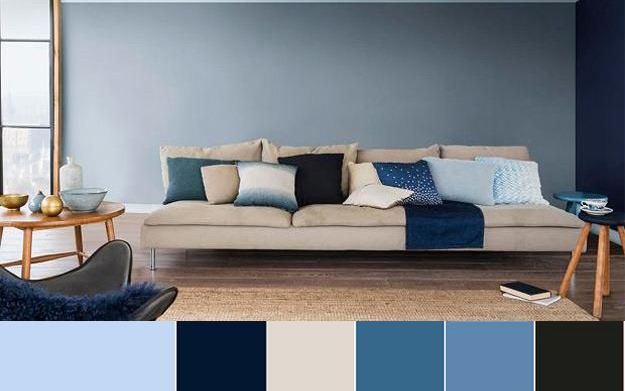
3. Use Color Harmonies: Color harmonies, such as complementary, analogous, and triadic color schemes, can help create a visually pleasing and balanced palette. Complementary colors, positioned opposite each other on the color wheel, create a dynamic contrast, while analogous colors, located adjacent to each other, offer a harmonious blend.
4. Consider Lighting: Lighting plays a significant role in how colors appear in space. Natural and artificial lighting can affect the perceived hue and intensity of a color, so test samples under different lighting conditions.
5. Size and Layout: The size and layout of the room can impact how colors are perceived. Lighter colors can make a small room appear larger, while darker colors can create coziness and intimacy.
Implementing Your Palette
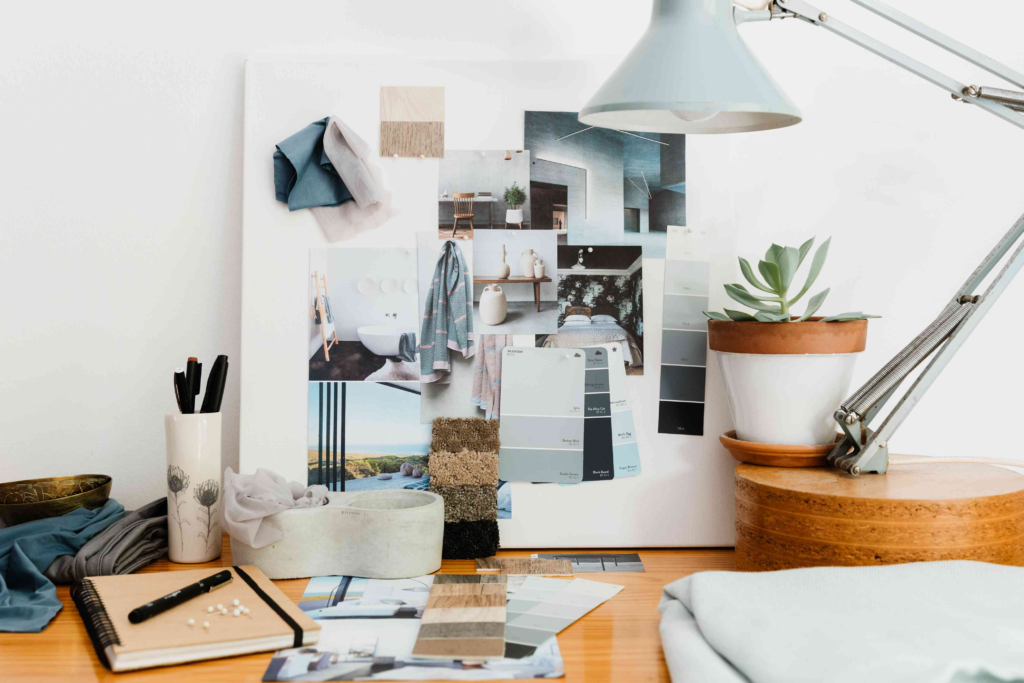
1. Main Color: Choose a dominant color for the walls and larger elements in the room, such as furniture or cabinetry.
2. Accent Colors: Introduce one or two accent colors to add depth and interest. These can be used for smaller furnishings, decor, and accessories.
3. Textures and Patterns: Incorporate textures and patterns that complement your color palette, adding visual appeal and tactile variety.
4. Test and Revise: It’s essential to test your chosen colors in the actual space before fully committing. Paint sample swatches on the walls and observe them at different times of the day.

The psychology of color is a powerful tool in interior design, offering the ability to shape the atmosphere and emotions of a space. By understanding the psychological impact of different colors and how they interact, you can create a harmonious and inviting home environment. When selecting a color palette, remember to consider the room’s purpose, your personal preferences, and the principles of color harmonies. With careful planning and experimentation, you can craft a color palette that reflects your style, enhances the mood you desire, and ultimately transforms your living space into a place of comfort and inspiration.

